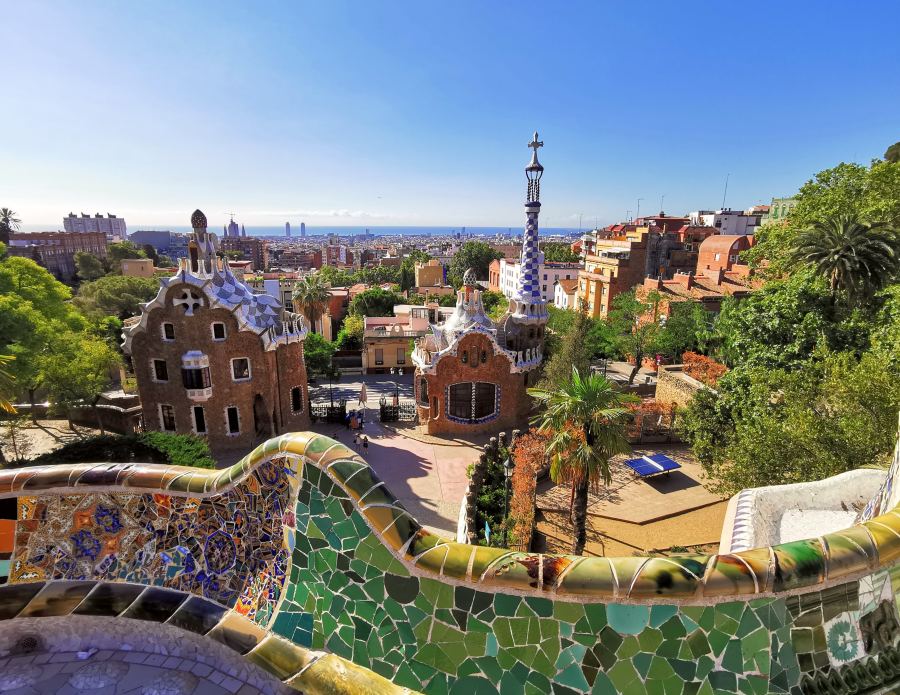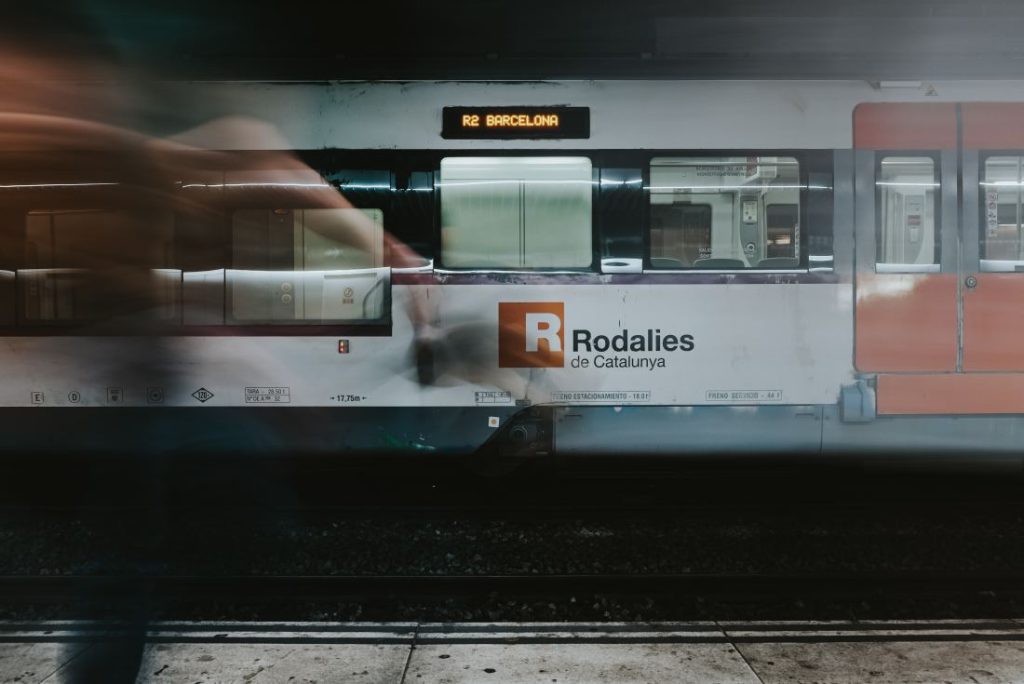The Sagrada Família, or the Holy Family Church, is Barcelona’s most famous and iconic building. Gaudí’s greatest work is still not complete, but it’s wonderful both inside and out!
One of the most beautiful churches in the world, not just in Spain, and a UNESCO World Heritage Site.
Located in downtown Barcelona, 2.5 km from the main square Placa de Catalunya. It has stops for both metro lines L2 and L5.
Table of Contents
History of Sagrada Família
The idea for the church came from a wealthy Barcelona bookseller, José María y Bocabella, who wanted a basilica where both rich and poor could pray. The first stone was laid in 1882.
In 1883, Gaudí was given the task of building the church. He devoted the rest of his life mainly to this work, considering the church his life’s masterpiece. With Gaudí’s involvement, the construction of the originally neo-Gothic planned church took a completely different direction. Gaudí changed the entire building to his own style, except for the existing Crypt. He put tremendous energy into this project during the remaining 43 years of his life, especially in the last 15 years when he focused solely on this.
On November 6, 2010, Pope Benedict XVI elevated the church to the rank of basilica and consecrated it.
Due to the complexity of the plans, construction has proceeded and continues to proceed very slowly, with work still ongoing. When completed, it will be the world’s largest basilica.

Description of Sagrada Família
Several architectural styles can be found. The pre-Gaudí architects planned a neo-Catalan building, which is a type of neo-Gothic style. Gaudí himself continued development in the spirit of modernism. The Passion Facade, in particular, shows modernist features.
Its floor plan is cross-shaped. It has five naves, with the main nave pointing south and measuring 90 meters from the apse to the northern end, with a width of 45 meters. A colonnade surrounds almost the entire church. It contains a chapel dedicated to the Assumption of the Virgin Mary.
Inside, there are many complex patterns, such as spiral towers reminiscent of sandcastles, topped with geometric shapes inspired by cubism.
Studying nature, Gaudí saw that many natural forms are approximately ruled surfaces. In the church, we can observe combinations of these, especially in the interior space and attic.
Towers
Gaudí designed the church with 18 towers, of which 12 are dedicated to the apostles, 4 to the evangelists, and the remaining two towers represent the veneration of Jesus and the Virgin Mary.
The basilica’s main tower is the Jesus Tower, which according to plans will rise above all others. It will be raised above the crossing and, at 170 meters tall, will be higher than the current tallest church spire, the tower of Ulm Cathedral. This height was chosen to be visible from afar.

Facades
The Nativity Facade opens to the east and is part of the World Heritage site. It depicts Jesus’s birth in rich detail and evokes classical Catalan architecture.
The Passion Facade is located on the western side. It’s a less ornate facade characterized by simplicity, clarity, transparency, and large shapes.
The Glory Facade was planned for the southern side but hasn’t been started yet. According to plans, it will have 21 columns and two chapels.


Interior
The interior height is very substantial: the side naves are 30 meters high, while the main and transept naves are 45 meters. The vault is supported by stone columns representing trees, which branch out at the top and merge into the ceiling.
The apse (semicircular section with the altar) contains seven chapels, which were made for joy and mourning. Here, the windows are decorated with natural motifs.



Crypt
Located under the apse, it’s in neo-Gothic style. Its floor plan is nearly circular, with an approximate area of 120 square meters, with seven chapels in a semicircle on its side. Opposite are three main chapels, each flanked by an additional chapel on both sides.
Mass is celebrated in the central chapel. To the right is the chapel of Our Lady of Montserrat, the patron saint of Catalonia, and the Jesus Chapel with Josep Maria Bocabella i Verdaguers’ tomb. On the other side are the chapel of sacraments and the chapel of Our Lady of Mount Carmel, where Antoni Gaudí rests.
(Source: Wikipedia)
Visiting Information
The Sagrada Família is open to tourists, with several ticket types available.
Both individual and guided tours are possible. For both, there are two ticket types: interior only, and interior + tower access.
An elevator takes you up the tower, but you must walk down the stairs. Therefore, the tower is not accessible for people with mobility issues. There are beautiful views of the city from the tower.
Entry is free for children under 11 years old.
Always buy tickets from the official website! Tickets usually sell out a few days in advance, so it’s worth buying early!
All information (opening hours, prices, online ticket purchase) can be found here!



